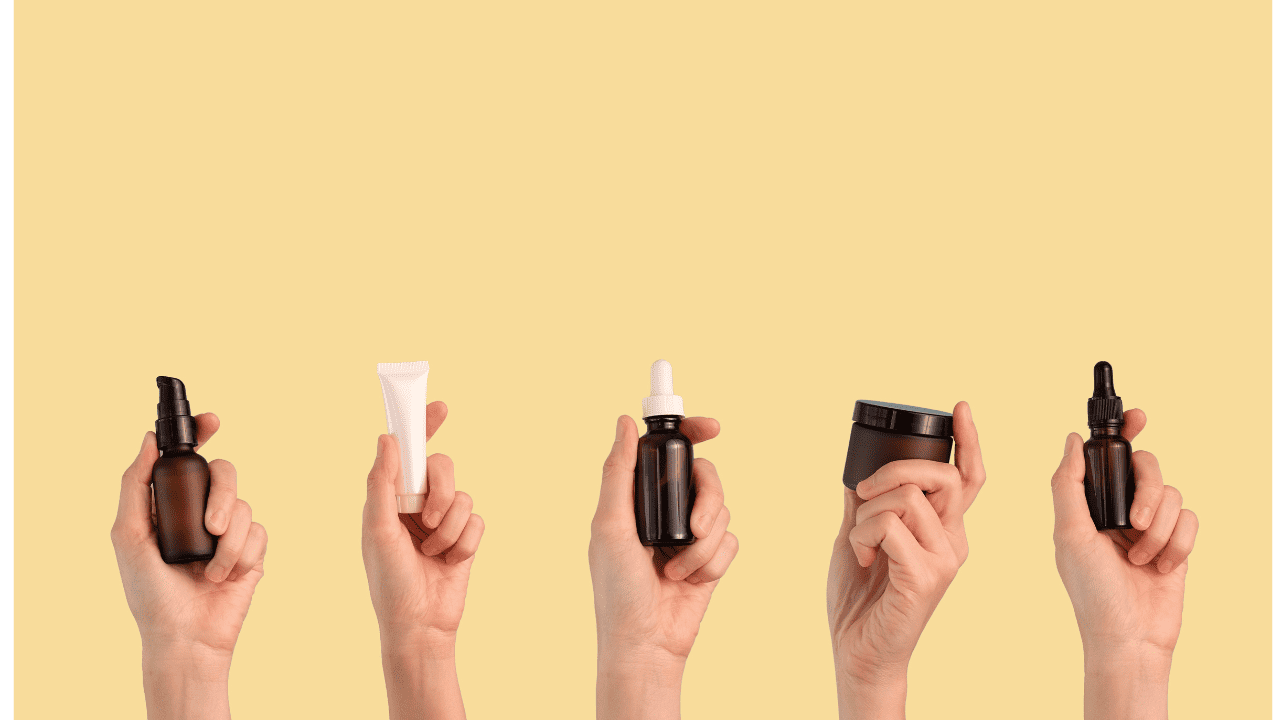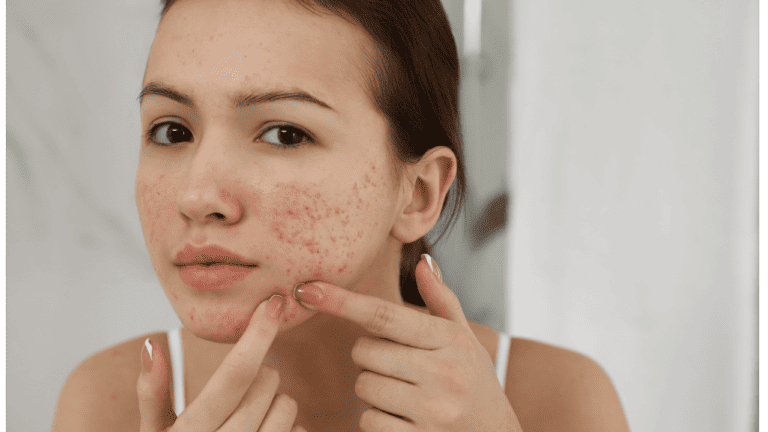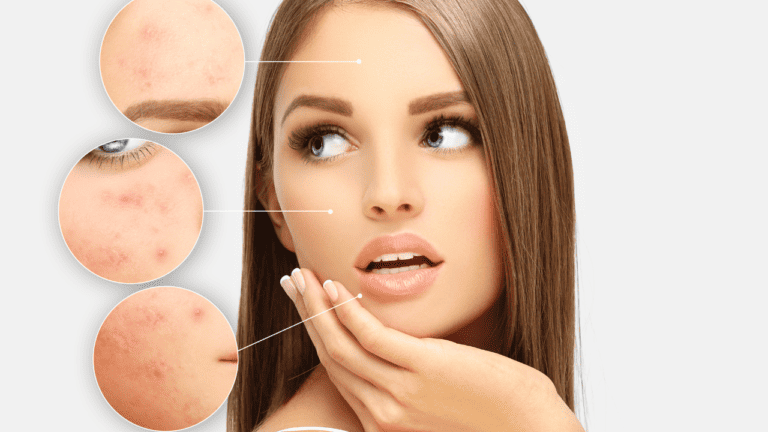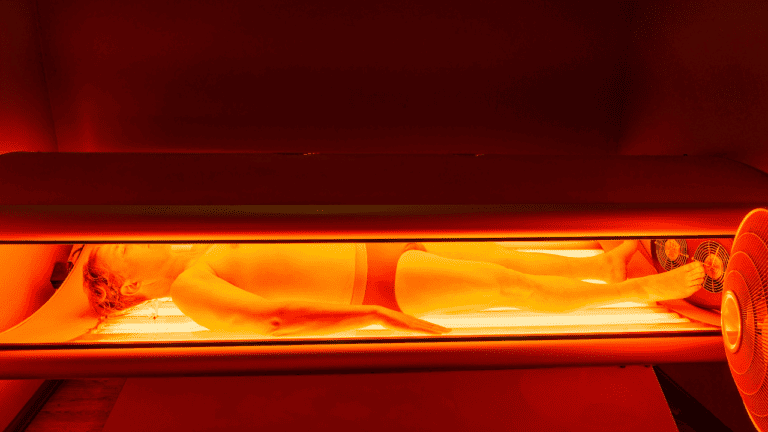Skincare is an integral part of many people’s daily routines. From cleansers to moisturizers, serums, and toners, consumers rely on these products to keep their skin healthy and glowing. However, many people are unaware that skincare products have an expiration date, and using them beyond this date can lead to a range of issues. This article explores the question, “Can skincare products expire?” and provides information on how to recognize and address expired products.

Understanding Product Expiration
Like all products, skincare items have a shelf life. This is the period of time during which the product is considered safe and effective to use. The shelf life of a product is determined by the ingredients it contains, how it is packaged, and how it is stored. When a product is past its expiration date, it may become less effective or even harmful to use. This is because the active ingredients in the product may have degraded or become unstable, leading to changes in texture, color, and scent.
Skincare Product Types and Expiry
Different skincare products have different shelf lives. For example, cleansers and toners can last up to two years, while moisturizers and serums may have a shorter shelf life of 6-12 months. Sunscreen is another product that has a limited shelf life and should be replaced every 1-2 years. It’s important to check the expiration date on each product before use and to dispose of any expired items. Proper storage and handling of skincare products can also help to extend their shelf life.
Key Takeaways
- Skincare products have a shelf life and can expire, leading to changes in texture, color, and scent.
- Different skincare products have different shelf lives, ranging from 6-12 months to 2 years.
- Proper storage and handling of skincare products can help to extend their shelf life.
Understanding Product Expiration

Skincare products, like any other cosmetic product, have a shelf life. Understanding the expiration of skincare products is crucial to ensure their effectiveness and safety. In this section, we will explore the various aspects of product expiration and how to identify expired products.
Expiration Dates and Shelf Life
Most skincare products come with an expiration date or a “best by” date. This date indicates the period during which the product will remain stable and effective when stored under appropriate conditions. The shelf life of skincare products varies from product to product, depending on the ingredients, formulation, and packaging.
Factors Affecting Product Expiry
Several factors can affect the expiration of skincare products. Exposure to heat, humidity, temperature changes, sunlight, air, and moisture can all contribute to product deterioration. Changes in smell, texture, and color, as well as separation, are also signs of expired products. Expired products can harbor bacteria, leading to infections, irritation, dermatitis, breakouts, and acne.
Identifying Expired Products
It is essential to identify expired skincare products to avoid any adverse effects on the skin. Expired products may not be effective and can cause skin irritation and breakouts. Signs of expired products include changes in smell, texture, and color, as well as separation and bacterial growth.
Consequences of Using Expired Skincare
Using expired skincare products can lead to various skin problems, including infections, irritation, dermatitis, breakouts, and acne. Expired products may also not be effective, leading to a waste of money and time. It is crucial to dispose of expired products safely.
Product Preservation and Longevity
Preservatives are added to skincare products to prevent bacterial growth and oxidation, ensuring product stability and longevity. Broad-spectrum preservatives are used to protect against a wide range of bacteria and fungi. Natural ingredients can also act as preservatives, but they are not as effective as synthetic preservatives.
Regulations and Guidelines
The FDA regulates cosmetics, including skincare products, to ensure their safety and efficacy. The FDA does not require skincare products to have an expiration date, but it recommends that manufacturers include a PAO symbol or batch code to indicate the period during which the product will remain stable and effective.
Period After Opening (PAO) Symbol
The PAO symbol is a small icon on the packaging that indicates the period during which the product will remain stable and effective after opening. The period is usually indicated in months.
Batch Codes and Manufacturing Dates
Batch codes and manufacturing dates are used to track products and ensure their quality. The codes are usually printed on the packaging and can be used to identify the manufacturing date and batch number.
Natural vs. Synthetic Preservatives
Natural preservatives are derived from natural sources, such as plants and minerals. They are less effective than synthetic preservatives but are preferred by some consumers due to their natural origin. Synthetic preservatives are more effective at preventing bacterial growth and oxidation, ensuring product stability and longevity.
In conclusion, understanding the expiration of skincare products is crucial to ensure their effectiveness and safety. Proper storage and disposal of skincare products can prevent adverse effects on the skin. The use of preservatives, natural or synthetic, can ensure product stability and longevity.
Skincare Product Types and Expiry

When it comes to skincare products, it’s important to know that they do have an expiration date. Using expired skincare products can lead to skin irritation, allergic reactions, and even infections. In this section, we’ll take a look at the different types of skincare products and their expiry dates.
Creams and Lotions
Creams and lotions are some of the most common skincare products. They are used to moisturize and hydrate the skin. These products typically have a shelf life of 6-12 months. However, if the product has been opened, the shelf life can be shorter. It’s important to check the product’s expiration date before using it.
Serums and Oils
Serums and oils are used to target specific skin concerns such as fine lines, wrinkles, and dark spots. These products typically have a longer shelf life than creams and lotions, ranging from 12-24 months. However, it’s important to store them properly, away from heat and light, to ensure their effectiveness.
Sunscreens and SPF Products
Sunscreen and SPF products are used to protect the skin from harmful UV rays that can cause skin cancer. These products typically have a shelf life of 1-2 years. However, if the product has been exposed to heat or sunlight, the effectiveness of the product can be compromised. It’s important to check the expiration date and store them properly.
Acne Treatments and Medications
Acne treatments and medications such as benzoyl peroxide and salicylic acid have a shelf life of about 1-2 years. It’s important to check the expiration date before using these products as expired products can cause skin irritation and allergic reactions.
Makeup and Color Cosmetics
Makeup and color cosmetics such as mascara and powders also have an expiration date. Mascara typically has a shelf life of 3-6 months, while powders can last up to 2 years. It’s important to check the expiration date and replace the product if it has expired to avoid eye infections and skin irritation.
Cleansers and Soaps
Cleansers and soaps are used to clean the skin and remove dirt and oil. These products typically have a shelf life of 1-2 years. However, it’s important to replace the product if it has changed in color, consistency, or smell as this can indicate bacterial growth.
In conclusion, it’s important to check the expiration date of skincare products before using them. Using expired products can lead to skin irritation, allergic reactions, and infections. It’s also important to store the products properly to ensure their effectiveness.
Proper Storage and Handling of Skincare

When it comes to skincare, proper storage and handling play a crucial role in the product’s efficacy and lifespan. In this section, we will discuss the optimal storage conditions, preventing contamination, packaging’s role in product stability, keeping track of opened products, and tips for extending product life.
Optimal Storage Conditions
Skincare products should be stored in a cool, dry place away from direct sunlight, such as a medicine cabinet or drawer. High temperatures can cause the ingredients to break down, reducing the product’s effectiveness. Similarly, humidity can cause the product to spoil or grow bacteria, rendering it unusable.
Some products, such as certain serums or face masks, may benefit from refrigeration. However, it is important to note that not all products require refrigeration, and some may even be damaged by it. Always check the product’s label or consult with the manufacturer for specific storage instructions.
Preventing Contamination
To prevent contamination, it is essential to keep skincare products clean and free from dirt and bacteria. Always wash your hands before applying products, and avoid using products with dirty hands. It is also recommended to avoid storing products in the bathroom or shower, where moisture and humidity can promote bacterial growth.
Using clean applicators, such as spatulas or cotton swabs, can also help prevent contamination. Additionally, avoid sharing products with others to reduce the risk of spreading bacteria.
Packaging’s Role in Product Stability
The packaging of skincare products can also play a role in the product’s stability and shelf life. Products that come in opaque, airtight containers or pumps are generally more stable than those in open jars or ampoules. Air and light can cause ingredients to break down, reducing the product’s effectiveness.
Keeping Track of Opened Products
It is important to keep track of when skincare products are opened and their period after opening (PAO) to ensure their efficacy and safety. PAO is the amount of time a product is safe to use after opening, typically indicated by a symbol of an open jar with a number followed by the letter “M” (e.g., 12M for 12 months).
Tips for Extending Product Life
To extend the lifespan of skincare products, it is recommended to use them as directed and avoid overusing them. Using too much product can not only be wasteful but also reduce the product’s effectiveness.
Regularly cleaning applicators and storing products properly can also help extend their lifespan. Additionally, testing the product before using it on your face can help prevent adverse reactions or sensitivity.
In conclusion, proper storage and handling of skincare products can help maintain their efficacy and safety, ensuring optimal results for your skincare routine.
Recognizing and Addressing Skin Reactions

When it comes to skincare, it’s important to recognize and address any signs of skin irritation or allergy. This is especially important when using expired products or old skincare products. Expired products can pose risks to the skin and cause irritation or allergic reactions.
Signs of Skin Irritation and Allergy
Some signs of skin irritation or allergy include redness, itching, burning, and swelling. If you experience any of these symptoms, it’s important to stop using the product immediately. In some cases, the reaction may be due to an expired product or an old product that has gone bad. Acids, retinol, and acne products are particularly susceptible to becoming unusable after six months to one year of opening.
Fungal infections are another concern with old or expired skincare products. If a product has been contaminated with fungus, it can cause irritation or allergic reactions. It’s important to note that even if a product is not expired, it can still cause skin reactions if it has been contaminated.
Consulting a Dermatologist
If you experience skin irritation or allergic reactions, it’s important to consult a dermatologist. A dermatologist can help determine the cause of the reaction and provide treatment options. They can also provide guidance on which skincare products are safe to use and which products to avoid.
In summary, recognizing and addressing skin reactions is an important aspect of skincare. It’s important to pay attention to expiration dates and period after opening information on skincare products. If you experience any signs of skin irritation or allergy, stop using the product immediately and consult a dermatologist.
Consumer Awareness and Education
Consumers’ awareness and education about skincare product expiration is crucial to ensure they are using safe and effective products. Understanding labels and symbols, the importance of expiry information, and brands’ expiry policies are all important aspects of consumer education.
Understanding Labels and Symbols
Skincare products typically have an expiry date or a period after opening (PAO) symbol on their packaging. The expiry date indicates the date until which the product is safe to use, while the PAO symbol indicates the number of months the product is safe to use after opening. It is important for consumers to understand these symbols and to check them regularly to ensure the product is still safe to use.
The Importance of Expiry Information
Using skincare products past their expiry date or PAO can be harmful to the skin and may not provide the desired results. Expired products can cause irritation, allergic reactions, and even infections. Therefore, it is important for consumers to pay attention to expiry information and to dispose of products that have expired.
Brands and Expiry Policies
Different brands may have different expiry policies, so it is important for consumers to check the expiry information for each product they use. Some brands may have a shorter expiry period than others, while some may have a longer one. Additionally, some brands may have a policy of not including an expiry date or PAO symbol on their products. In such cases, consumers should contact the brand to inquire about the product’s expiry information.
Overall, consumers should be aware of the importance of checking expiry information and should educate themselves on how to read and understand labels and symbols. By doing so, they can ensure they are using safe and effective skincare products that will provide the desired results.
Environmental Impact and Sustainability
Skincare products are an essential part of many people’s daily routine. However, the disposal of expired skincare products can have a significant impact on the environment. When these products are not disposed of properly, they can end up in landfills, polluting the soil and water. Therefore, it is essential to take into account the environmental impact of skincare products and their sustainability.
Disposal of Expired Skincare Products
Expired skincare products can be harmful to the environment if not disposed of properly. Many skincare products contain chemicals that can be toxic to the environment. When these products are disposed of in landfills, the chemicals can leach into the soil and water, causing pollution. To prevent this from happening, it is essential to dispose of expired skincare products properly.
Consumers can dispose of expired skincare products by checking with their local waste management facilities for instructions on how to dispose of these products. Some facilities may have specific instructions for the disposal of skincare products, such as separating them from other household waste. Additionally, some skincare brands have their own recycling programs, which allow consumers to return their empty containers for recycling.
Eco-Friendly Packaging and Formulas
Sustainability is an essential consideration when it comes to skincare products. Eco-friendly packaging and formulas can help reduce the environmental impact of skincare products. Many skincare brands are now using eco-friendly packaging, such as recyclable or biodegradable materials.
Furthermore, some skincare brands are now using natural and organic ingredients in their formulas. These ingredients are often sustainably sourced and have a lower environmental impact than synthetic ingredients. Additionally, some brands are using renewable energy sources in their manufacturing processes, further reducing their environmental impact.
In conclusion, the environmental impact and sustainability of skincare products should be a consideration for both consumers and brands. Proper disposal of expired skincare products and the use of eco-friendly packaging and formulas can help reduce the environmental impact of these products.
Frequently Asked Questions
How can one determine if a skincare product has expired?
Most skincare products have a small symbol on the packaging that indicates how long the product is good for after it has been opened. This symbol is usually a jar with an open lid and a number inside, indicating the number of months the product is good for after opening. However, if the symbol is not present, or if the product has not been opened, the consumer can still look for signs of expiration. These signs include changes in texture, color, or smell. If a product has changed in any of these ways, it is likely that it has expired.
What are the potential risks of using expired face creams?
Using expired face creams can lead to a variety of potential risks. For example, the product may no longer be effective, and may even cause harm to the skin. Expired products can also harbor bacteria, which can cause skin irritation, infections, or even acne. In some cases, using expired products can cause an allergic reaction. For these reasons, it is generally recommended that consumers avoid using expired skincare products.
Is it safe to use skincare products after the expiration date if they remain unopened?
Skincare products that remain unopened after the expiration date may still be safe to use, but their effectiveness may be diminished. Over time, the active ingredients in skincare products can break down, rendering them less effective. Additionally, unopened products can still be contaminated with bacteria or other harmful substances, so it is important to use caution when using any skincare product, regardless of whether it has been opened or not. If in doubt, it is best to err on the side of caution and dispose of any expired skincare products.






